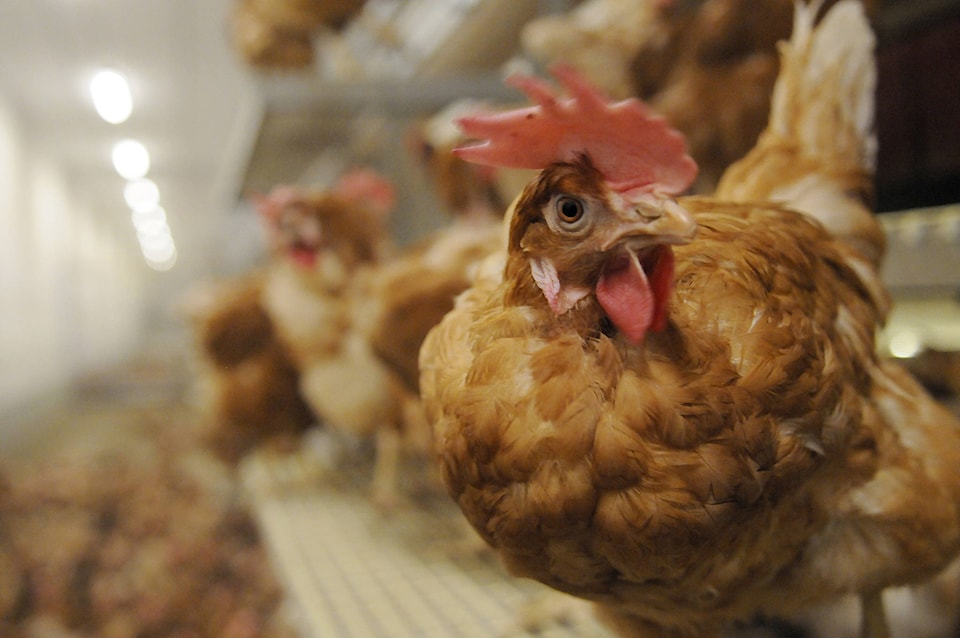Abbotsford’s population is nearing 10 million. Chickens, that is.
Newly released figures from the 2016 Census of Agriculture show that there were 9.85 million hens and chickens in the city last year on 349 farms. That’s an 18 per cent increase in the number of birds since 2011. The number of farms rose from 308 five years ago.
The figures mean that for every human in Abbotsford, there are about 70 chickens. The bulk of that comprised of poultry bred for food consumption.
Cheryl Davie, with the Abbotsford-based BC Chicken Marketing board, said the higher numbers weren’t a huge surprise given increasing consumer demand.
“We operate in a supply managed industry where we ensure that supply meets demand,” Davie told The News in an email. “In 2016 we saw a significant increase in demand for chicken in B.C.”
Sales of chicken in the summer of 2016 were about 10 per cent higher than the previous year, Davie noted. She attributed that to higher beef prices, less cross-border shopping and economic growth.
“We have been also seeing a longer term shift in consumer preference towards more healthy, lean proteins such as chicken,” she added.
Across Canada, there were 145.5 million chickens in 2016, up from 133 million five years ago.
The number of cattle in the city also rose over the last five years, from 28,694 in 2011 to 35,562 last year. The vast majority of those were dairy cows and their calves. Across Canada, there were 12.5 million cattle and calves, about one for every three people.
While the numbers of cows and chickens are growing faster than Abbotsford’s human count, the city’s pig population is decreasing. Last year, 39,760 pigs were counted in the city, down from 51,530 in 2011.
(See more below)
The census shows Abbotsford’s agriculture sector thrived between 2010 and 2015.
In 2010, the industry reported $639 million in total gross farm receipts. Five years later, that figure was $853 million, a jump of 33 per cent. That increase is in line with the rise in farm receipts across the country.
In Abbotsford, the number of farms with receipts over $2 million increased from 63 to 103.
But while revenue is increasing, the number of farms and farm operators in Abbotsford was level. The city had 1,307 farms run by 1,985 operators in 2016. That compared to 1,282 farms and 2,005 operators five years prior. Across Canada, the number of farms dipped from 205,730 in 2011 to 193,492 last year.
The vast majority of operators remain men. And, like the rest of the country’s population, their ranks are aging. The average age of operators last year was 52.8, up from 51.9 five years prior.
The census also shows that berry farmers have continued to move towards blueberries, with the amount of land under cultivation increasing to 7,585 acres last year, an 18 per cent increase from 2011.
Over that time, the amount of raspberry and cranberry acreage decreased by an equal amount.
@ty_olsen
tolsen@abbynews.com
Like us on Facebook and follow us on Twitter.
